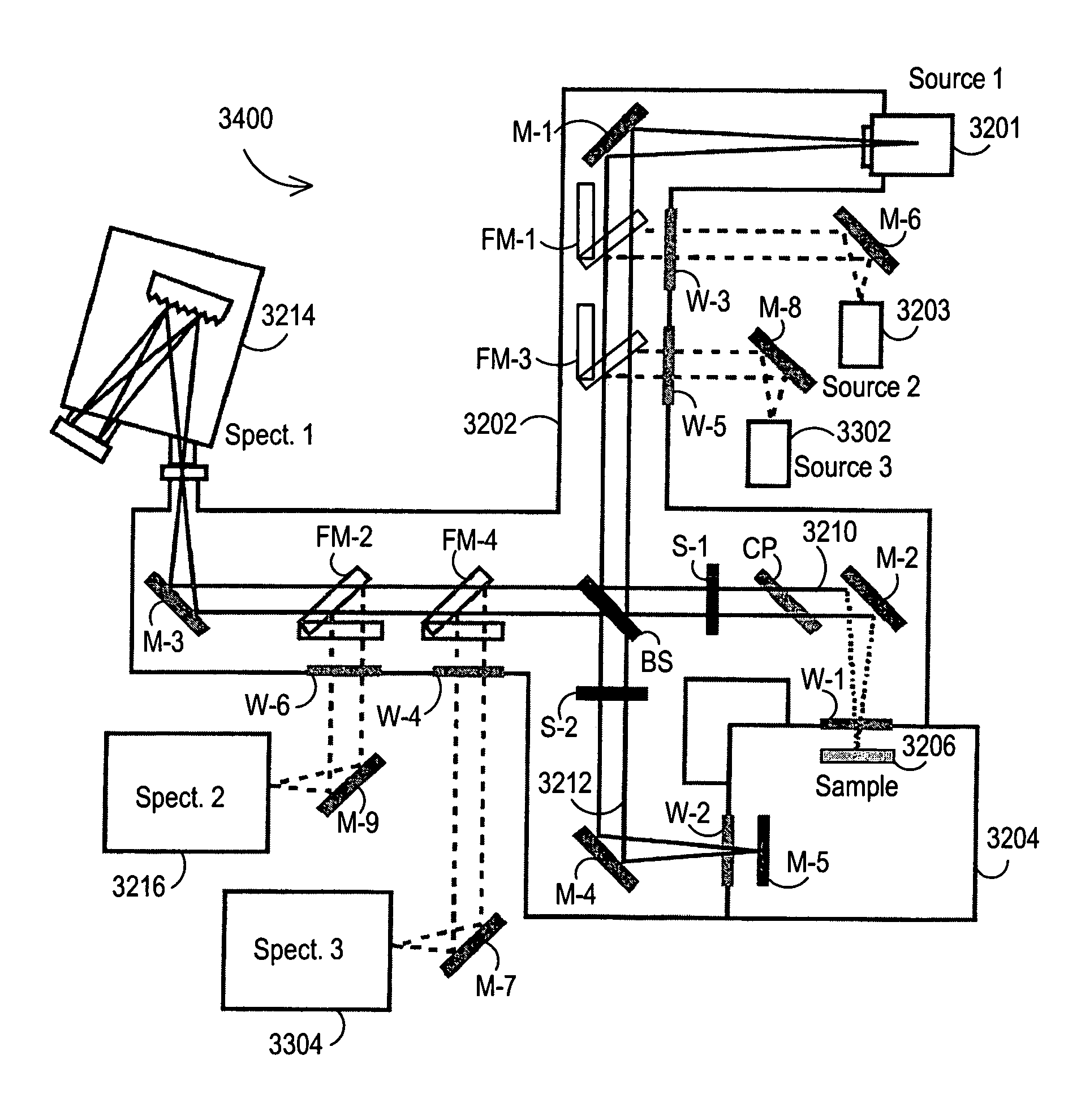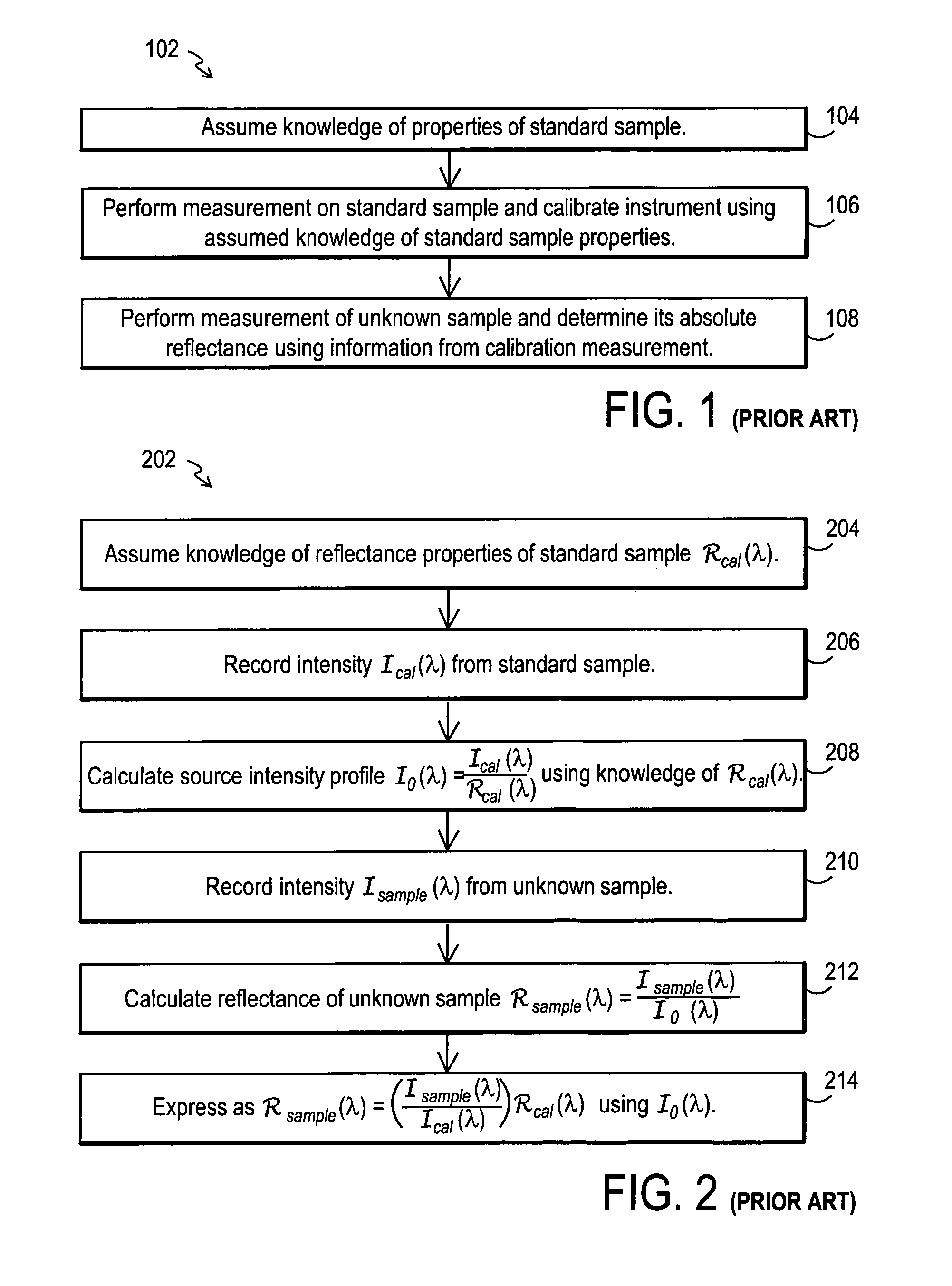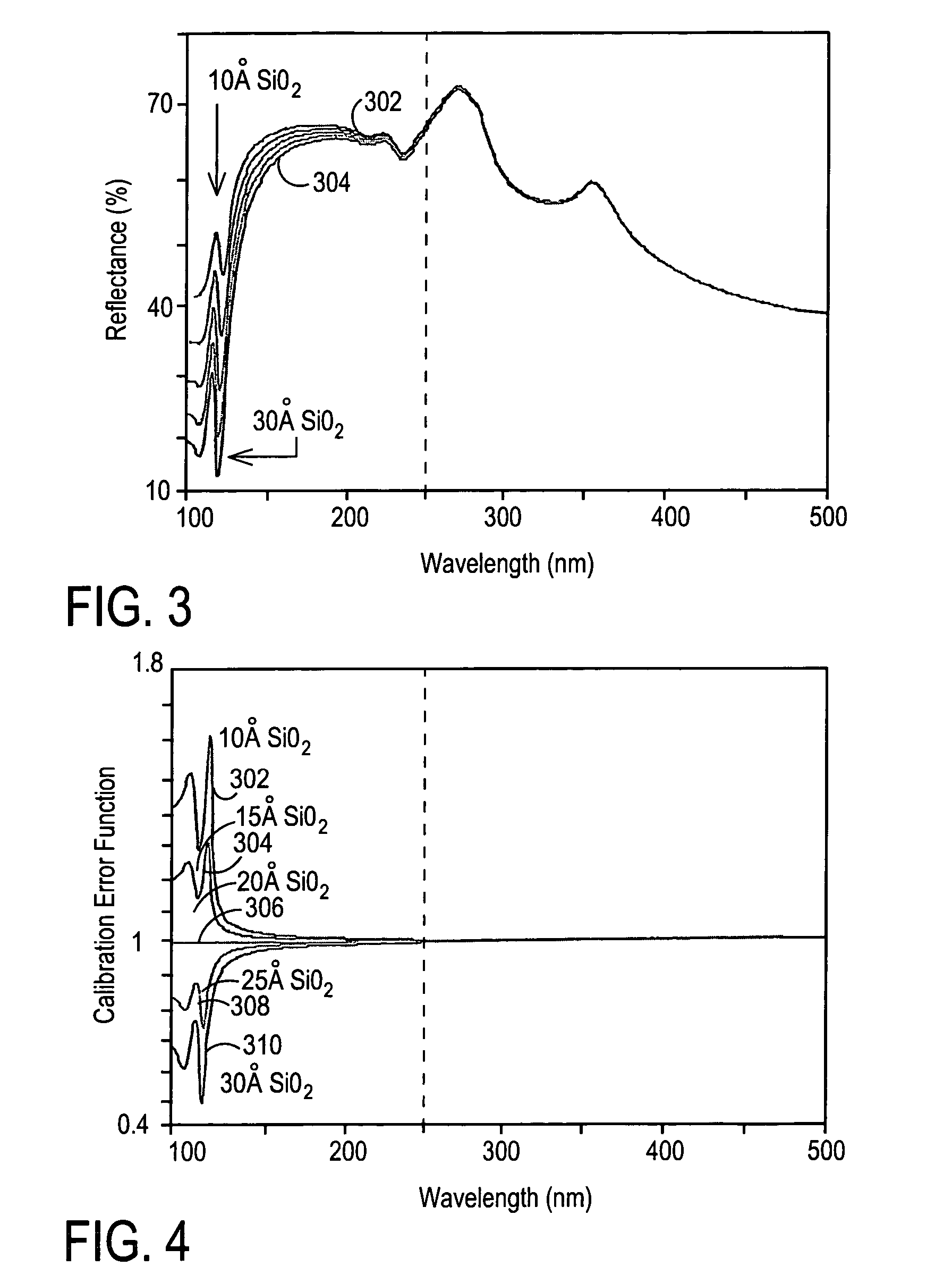Method and apparatus for accurate calibration of a reflectometer by using a relative reflectance measurement
a technology of relative reflectance and calibration method, which is applied in the field of optical metrology, can solve the problems of difficult integration into systems suitable for use in semiconductor manufacturing environments, difficulty in detecting variations in calibration standard over time, and difficulty in fast and accurate calibration. achieve the effect of quick and accurate calibration
- Summary
- Abstract
- Description
- Claims
- Application Information
AI Technical Summary
Benefits of technology
Problems solved by technology
Method used
Image
Examples
Embodiment Construction
[0064]The manner in which standard samples are typically used to calibrate reflectometers is generally presented in the flowchart 102 of FIG. 1. As is evident in the figure the first step 104 in the calibration process is to assume knowledge of the reflectance properties of the standard sample. With this information in hand, the intensity of light reflected from the sample as a function of wavelength can be recorded and the reflectometer calibrated in step 106. Subsequently, the reflectance of unknown samples may then be absolutely determined with the device in step 108.
[0065]A more detailed description of this calibration procedure is outlined in the flowchart 202 of FIG. 2 wherein the mathematical relationships involved in calculating the absolute reflectance of an unknown sample are presented. FIG. 2 illustrates the flowchart 202 for the calibration procedure. In a first step 204, knowledge of reflectance properties of a standard sample is assumed. Then in step 206 the intensity ...
PUM
 Login to View More
Login to View More Abstract
Description
Claims
Application Information
 Login to View More
Login to View More - R&D
- Intellectual Property
- Life Sciences
- Materials
- Tech Scout
- Unparalleled Data Quality
- Higher Quality Content
- 60% Fewer Hallucinations
Browse by: Latest US Patents, China's latest patents, Technical Efficacy Thesaurus, Application Domain, Technology Topic, Popular Technical Reports.
© 2025 PatSnap. All rights reserved.Legal|Privacy policy|Modern Slavery Act Transparency Statement|Sitemap|About US| Contact US: help@patsnap.com



